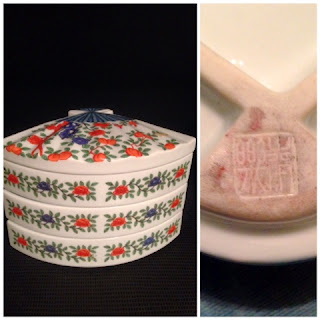When Japan was finally opened to the outside world in 1868, demand for exports of Japanese ceramics began to mount until it exploded around the 1880's. The products made for export were generally gaudy and hastily done. It is said that "blanks" were delivered to many locations near ports such as Tokyo, Yokohama, Osaka, Kobe, Kyoto, etc. Men, women and children were involved in decorating the pieces to enable them to get as many ready for export as possible. "Satsuma" ceramics for export usually had warriors, geisha, etc., whereas the domestic market pieces were dominated by flowers and landscapes which were produced with much more care. Much of what westerners label as Satsuma is not true Satsuma. True Satsuma began in Kagoshima and Kushikino but after finding good clay, moved to Naeshirogawa, a village in Satsuma Province in the early 1600's. It is a very beautiful, intricate and quality ceramic with a distinctive natural crackle to the glaze. There is absolutely no comparison of real Satsuma to the export wares known to many westerners as "Satsuma". (see Japanese Ceramics of the last 100 years by Irene Stitt).
I found this vase below (showing front and back) at a second hand shop. I thought this was a good specimen to show what many in the west have come to know as "Satsuma". The marks inside the bottom read 右四十, which I assume means "right 40" which might refer to either its order coming off the production line for the right side of a pair or the right side of a large numbered set. Often vases came in pairs or sets. I am not sure of the age of this piece as I have seen similar pieces described as being anywhere from 1880-1920. I can say that this certainly does show its age, having a golden repair and with crazing in the moriage. Notice that the creamy glaze inside and at the bottom of the vase does not show the delicate crazing expected of true Satsuma. I have seen many similar shapes on line so I believe these were probably blanks that were decorated with various designs. This vase stands 12" which also fits one of the common sizes. Although not quality Satsuma, these kinds of pieces have become quite collectible.















